Nature’s “Clean-Up” Crew
on Oct 19, 2021"Contemptible individual who preys on or exploits others." Quite possibly the most misunderstood animal in the animal kingdom. Even when we use their name; when we call people vultures, it's not used in a complimentary manner. Contrary to popular belief and how we use their name, they do no harm. They actually spend most part of their day cleaning up and making the environment a healthier place.
We shared an incredible sighting a few days ago; a wake of vultures descended on a young buffalo carcass, through this blog I hope to break some of the “negative stigma” behind these incredible creatures and share some much-needed love and appreciation for their unique adaptations and in turn what they give back to our environment.
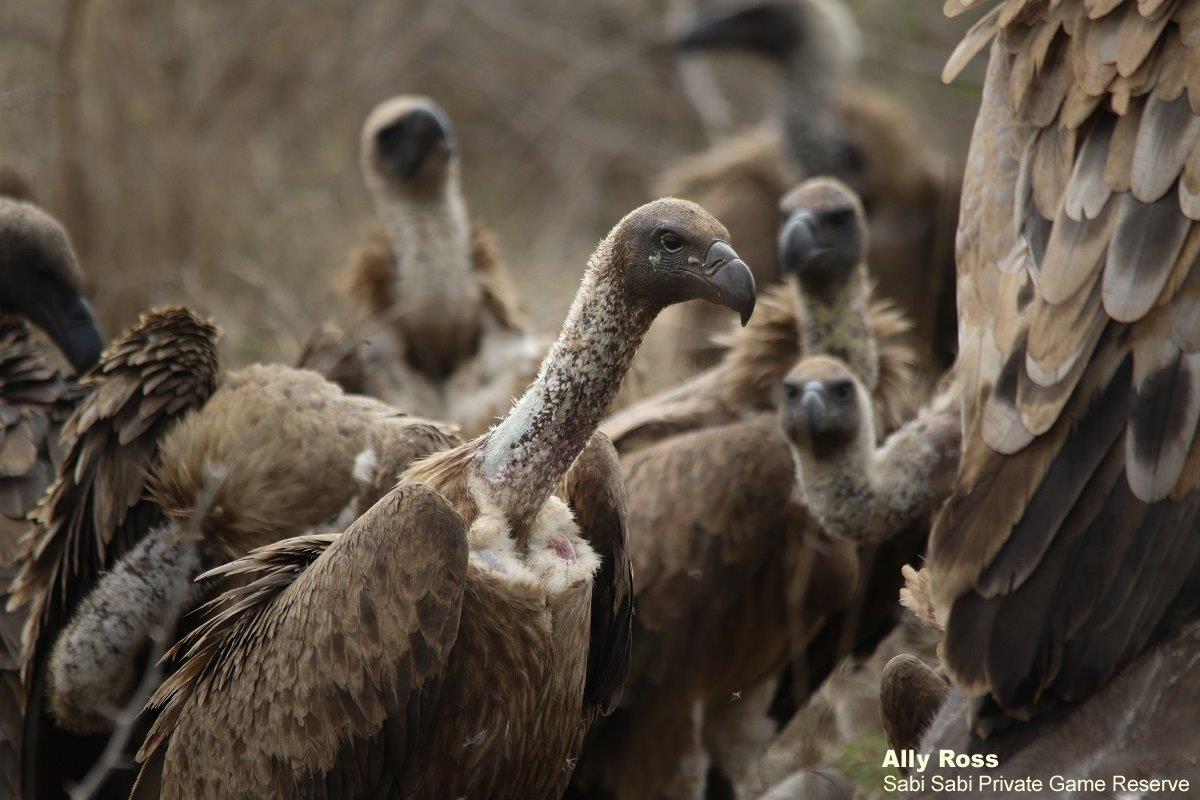
The sight of a committee of vultures perched in a tree is enough to pique any guide's interest, but when a wake is descending, nothing moves faster than that guide. Having seen vultures moving their circled flight closer to the ground, myself and two other guides made a hasty approach towards them.
With wings soaring through the sky gracefully, their phenomenal eyesight allows them to spot a carcass from miles up in the air and with that they are approaching the buffalo like a Boeing 747 coming in to land, with large powerful talons outstretched; big bulky feathered bodies bounce their way towards the meal.
We arrived just like them moving in, eager to see what was taking place!
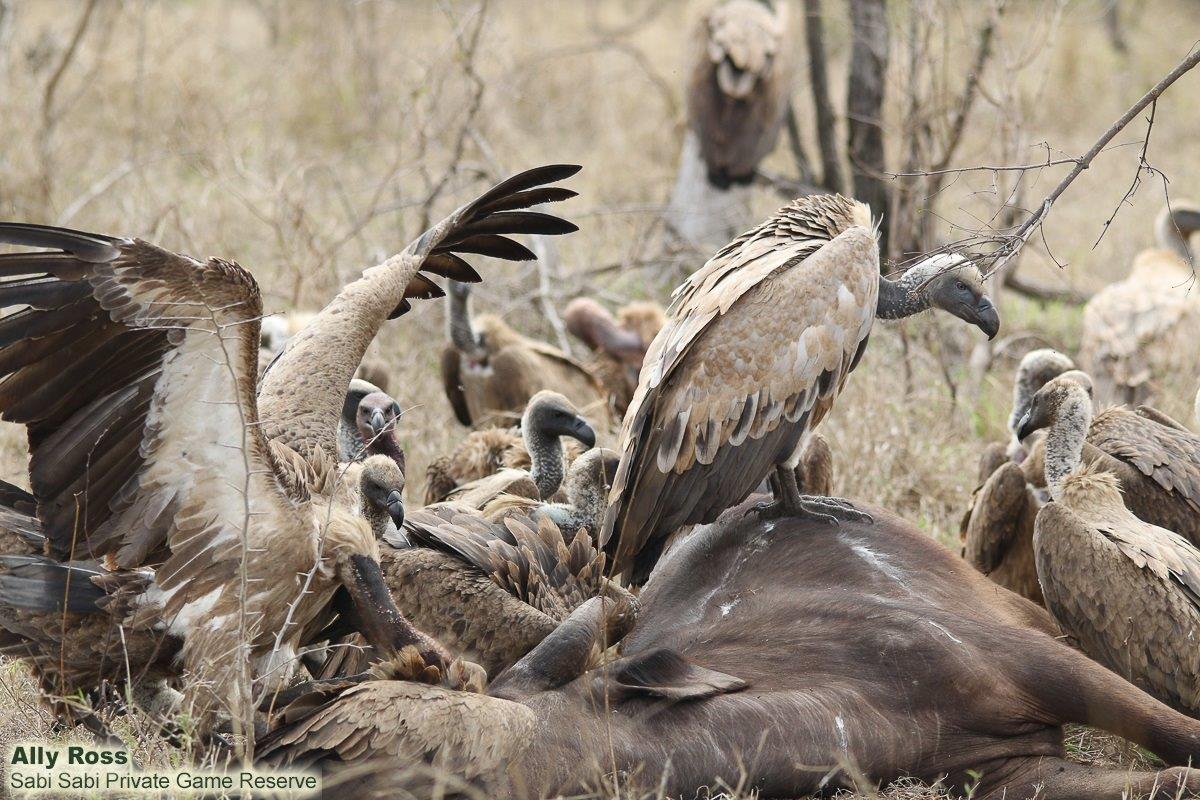
What may seem like a frenzied mess around a carcass is actually a very strict hierarchal feeding structure based on body and most importantly beak size. In this instance, it isn’t a “first come first serve” it's all about who has the right “tools” for the job.
Most of the vultures that we see at a carcass are namely the White-backed Vulture and the Hooded Vulture. From time to time, we see the White-headed Vulture and Lappet-faced Vulture and more recently a healthy number of Cape Vulture.
Their arrival at the scene and feeding order as mentioned above are all based on beak structure for feeding. The Hooded Vulture, with a rather small, thin beak that is used for feeding on scrap and sinew between the bones, would be unsuccessful at opening a carcass to feed, they would need a vulture more powerful in both size and stature, such as the Lappet-faced Vulture. This species of vulture is well known for their power and strength in opening really large thick-skinned animals.
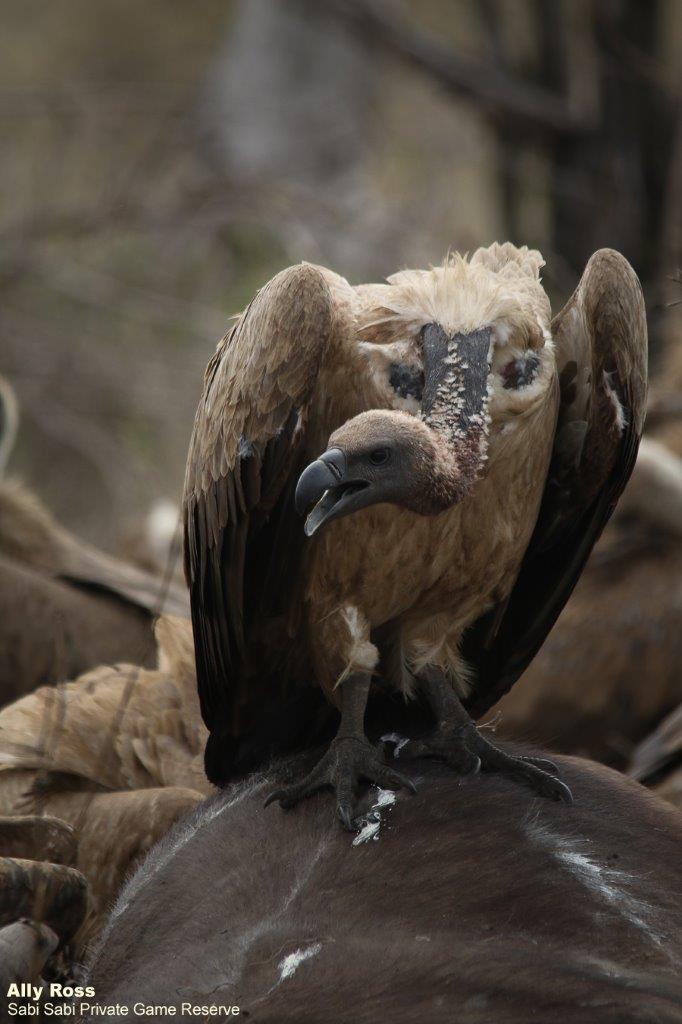
In this particular sighting, the main body of the buffalo had not yet been opened by any predators. The vultures approaching the carcass were the White-backed Vulture and the lesser seen Cape Vulture, what a treat to see, but both were, unfortunately, struggling to open the main body cavity of the animal and wasted no time entering soft tissue orifices such as the mouth, eye sockets and rectum, as their beaks are suited to feed on these areas. Their bald heads, devoid of feathers, are also perfect for plunging deep into the small openings of the carcass. A great adaptation to remain “clean" during a feeding.
Some of the White-backed Vultures that had perched triumphantly on the carcass were soon chased and hissed into submission by the larger Cape Vultures. Their hisses and guttural noises kept individuals at bay as they each fought for an opportunity to claim prized spots. It was amazing to watch and incredible to listen to. An audio not often heard or appreciated.
Here is a link to a video of the sounds and sights seen at this event.
Vultures across the world, and in particular Africa are an essential species in maintaining a healthy and balanced environment, ridding the ecosystem of diseases and unwanted remains. Although deemed “scavengers" and portrayed in poor light by many, without their presence all would suffer.
Which brings us to their decline in numbers and why we need to protect them. Unbeknownst to many their numbers are plummeting steadily and could create problems within the foreseeable future.
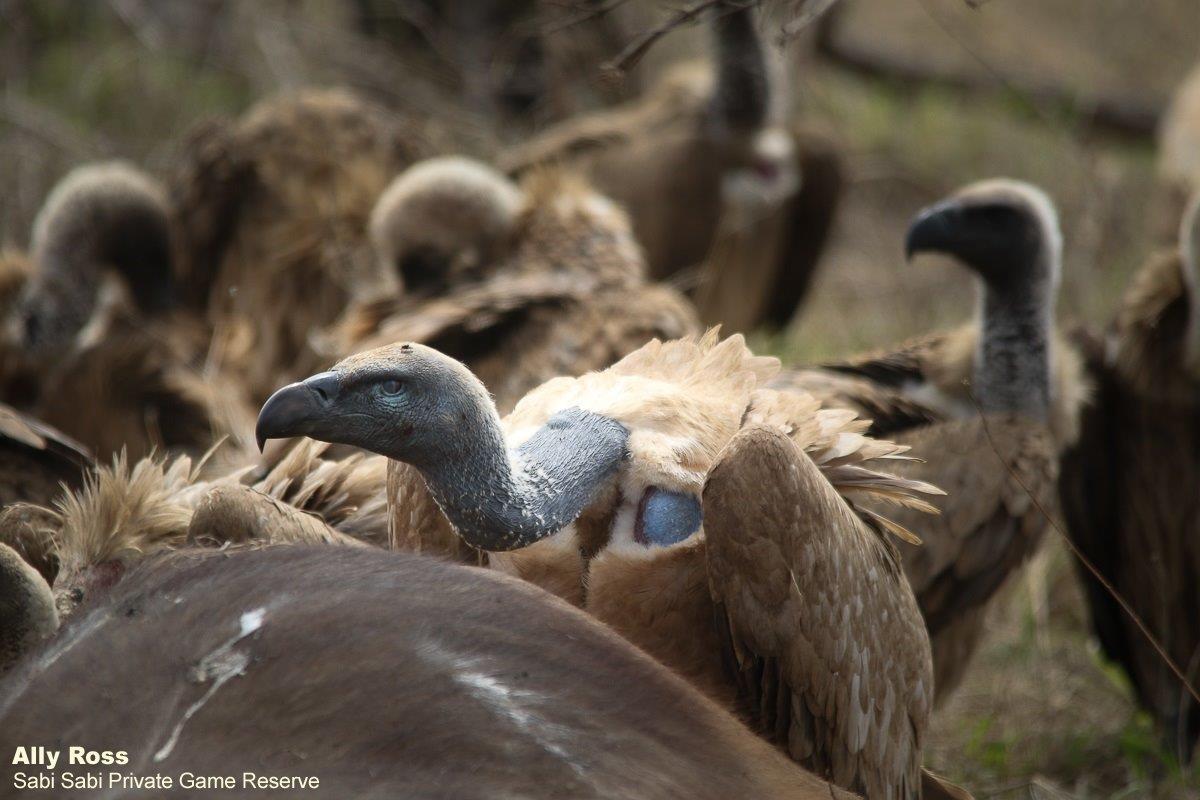
The White-backed Vulture, found on the carcass, is endemic to Africa and is one of the most common and widespread vulture species in the continent, but they are however considered “critically endangered” owing to rapid decline in habitat loss, prey and hunting for trade. We often find that some of the biggest causes of death are that of poisoning. There are only an estimated 40,000 individuals left in Africa.
The Cape Vulture, also found on the scene, is also endemic to Africa and is found mainly in South Africa, Lesotho and Botswana. This species of vulture is too listed as “endangered”. The main threats that these magnificent birds face are poisoning and collisions with man-made structures, such as pylons and cables. Along with this, unsustainable harvesting for traditional uses is a major cause of species number decline as well. We only have around 4,700 breeding pairs left.
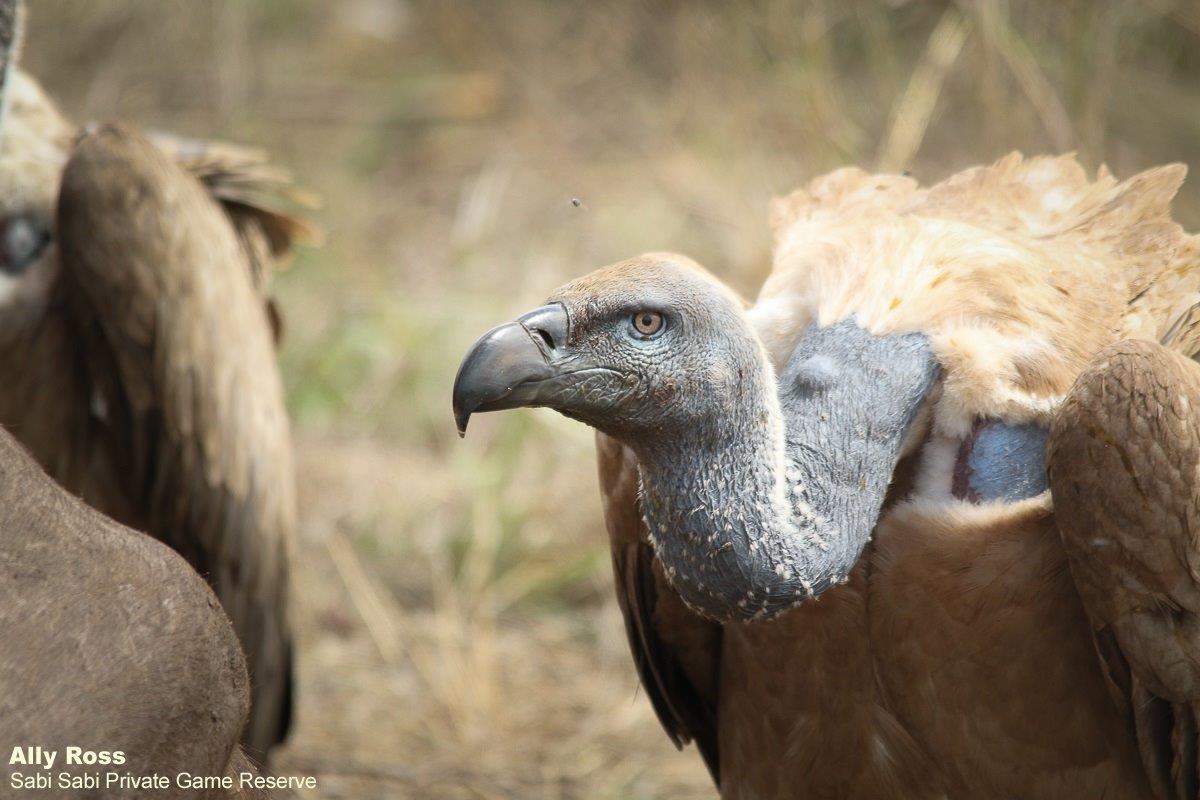
These gentle and charismatic creatures are longing to be understood and could benefit from a little love out on safari. Their role in our ecosystem is vitally important and they need to be conserved.






